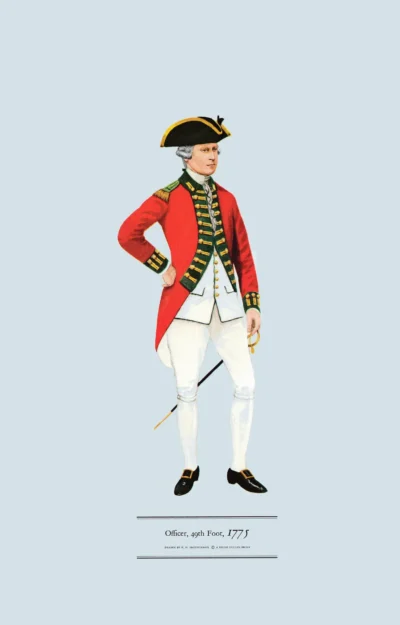Officer, 23rd Foot, 1790 (Royal Welch Fusiliers)
£15.00
The Royal Welch Fusiliers merged into 1st Battalion, The Royal Welsh in 2006 (scroll down for a more detailed Description)
Published 1965 by © Hugh Evelyn Limited; drawn by Colonel Philip Henry Smitherman (1910-1982), Royal Corps of Signals
Size: c. 24.5 x 37.5 cm [9 ½ ″ x 14 ½ ″] (may vary slightly from printers’ cut 50 years ago)
Printed on on medium cardstock weighing 144 g/sm2 faced in light greyish blue (RGB c. d4e1e8)
Print is STANDARD size – shipping is the same for 1 to 10 prints (based on largest print size in your order) – see Shipping & Returns.
In stock
Description
The 23rd (Royal Welch Fusiliers) (Ffiwsilwyr Brenhinol Cymreig) was raised by Henry Herbert at Ludlow in March 1689, following the 1688 Glorious Revolution and exile of James II. As part of the Prince of Wales’ Division, in 1702, it was designated a fusilier regiment and became The Welch Regiment of Fusiliers. One of the few regiments to retain its original title, in March 2006 it merged into the Royal Regiment of Wales as 1st Battalion, Royal Welsh. The bunch of black ribbons worn on the collar at the back, a survival of the ribbons worn before 1805 to protect the collar from the grease of the pigtail, remained. The plate with the royal arms on the cap has gone, replaced by a badge. The collar has been turned up again and assumes the form it later retained. The elaboration of the gold lace on the cuffs and lapels is in contrast with earlier simplicity. Being a fusilier, armed on service with a fusil, he wears a shoulder belt with a pouch and a sword belt. Black gaiters replaced white spatterdashes, except in the Foot Guards. White was replaced by brown, but not considered smart so were blacked, later replaced with black gaiters. The 23rd wore a badge, Prince of Wales’ feathers, so it appears on the gorget instead of the royal Arms. The regimental plate on the shoulder-belt, was an innovation worn by all ranks, so soldiers carried easily recognisable signs of their regiment like the later cap-badge. Previously they could be identified only by buttons, or the pattern of his lace. Sources: Portrait of an officer of the Regiment and a coat (of a slightly later date) at the National Army Museum, Sandhurst (in 1965).
Additional information
| Weight | 0.0131 kg |
|---|---|
| Dimensions | 23 × 37 cm |





